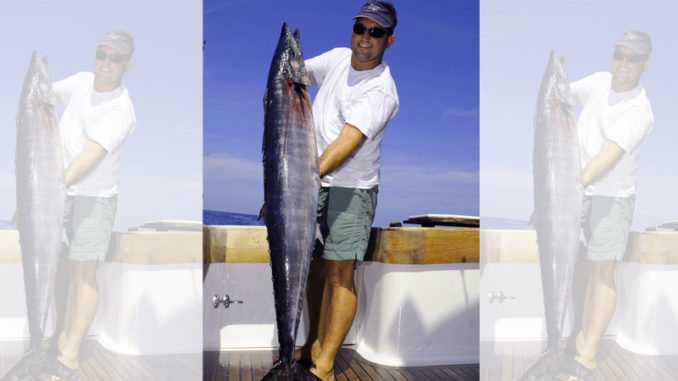
N.C. fishermen target wahoo in the fall above any other time period
Fall mornings start early along the Atlantic Beach canals and Morehead City waterfront. In the lingering darkness, captains and mates prepare charter boats for the day’s work. The fishermen arrive before the sun cracks the horizon, sleepy but excited. They’re all filled with expectations of great fishing.
The reason? In the fall, the offshore waters beyond Cape Lookout teem with pelagic bluewater predators. Chief among them is the wahoo, acanthocybium solanderi, one of the world’s most-prized gamefish.
North Carolina’s coastal waters hold big concentrations of wahoo. It’s one of the few places that does so. Anglers catch them year-round, with peaks in the spring and fall. And some of them are genuinely large specimens.
Wahoo travel the rips and temperature breaks of the Gulf Stream off the North Carolina coast. They average 25 to 50 pounds. But 80-pounders are surprisingly common. And anglers catch a handful of triple-digit fish each year. The minimum size for a citation from the N.C. Division of Marine Fisheries is 40 pounds, and a lot of ink is spent printing them every year. Kevin Elwell’s state-record, 150-pound fish, was caught off Ocracoke in the fall of 1994.
Wire leaders are a necessity
Wahoo closely resemble their king mackerel cousins. They are long, muscular fish capable of high-speed sprints. Their mouths are filled with very sharp teeth that can reduce monofilament or fluorocarbon leaders to pieces of string. So anglers often target them with wire leaders and ballyhoo rigged for 5- to 8-knot trolling speeds. But in some areas, anglers prefer high-speed lures that can be trolled at 13 to 18 knots.
Curtis Morris, mating for Capt. Mike Webb aboard the 61-foot Pelagic out of Morehead City a few years ago, readied lures as Webb approached a temperature break and color change and throttled down. His trolling spread was made up of seven lines. It consisted of pairs of short and long lines from the outriggers, a shotgun line from the bridge, a planer line on the starboard side of the transom and a flat line on the port side.
“This is a little inshore of where I was headed, but there is a color change with a temperature break. And I know better than to pass it by,” Webb said. “We caught some wahoo close to here earlier in the week. And this temperature break should be holding bait and fish.”
Other fish will often hit wahoo lures
A strike from a dolphin got things started. The clattering of the fish in the fish box was interrupted by a strike on the planer rod. The rod bucked and the line started rising in the water. Morris quickly strapped the outfit to a fisherman and coached as he recovered line.
Because the fish wasn’t taking line against the drag, Webb didn’t expect a trophy specimen. He fishes a heavier drag for wahoo than any other bluewater pelagic. The angler uses 15 pounds on the flat and outrigger lines. He goes even heavier on the planer rod.
Morris removed the planer from the bridle and told the fisherman to continue reeling. Shortly thereafter, the electric blue stripes of an excited wahoo appeared about 40 feet behind the transom. In another minute, Morris grabbed the leader, led the wahoo within range of his gaff. He hit the fish, swung it across the transom, and onto the deck.
Planers come in handy
“The bridled planer setup really works well, especially for wahoo. Many days, it is the money rod,” Webb said. “We make a bridle at the end of the braided line, with loops to attach the front and rear of the planer. This allows the planer to set and pull the line down, then trip when there is a strike. The planer has clips and is removed to let the fisherman reel in the rest of the line. We use 100 feet of 250-pound mono behind the braided line. That gets the bait well behind the planer and we attach the bait or lure using a short, wire leader. This setup catches a lot of fish, especially wahoo. And it makes it easy to handle them.”
Webb prefers rigged ballyhoo for the surface lines. But on days the wahoo are really biting, he often switches to a lure on the planer line. The trade-off is that the lure gets fewer strikes. But almost all are landed. That’s no small feat when it comes to wahoo.
Webb keeps the Pelagic moving through most of a day on the water, looking for signs of fish. He may start inside the break at 25 fathoms and work offshore as far as 125 fathoms. He’ll spend plenty of time in an area where conditions look right for holding fish.
“Lots of things can help you find fish,” Webb said. “Several services plot water temperatures and other factors and send you a report. With satellite communications, you can even receive updates on sea factors and weather while you are fishing.
Recent catch history helps determine where to troll
“The ocean bottom has been plotted pretty well, and charts show most significant rocks and holes; you know these will deflect the Gulf Stream in some way. Even with all that, the best information you can have is where you or your friends caught them yesterday.”
On the way offshore, Webb constantly watches for signs of fish or bait, color changes, temperature breaks and current rips. If he finds one, he’ll stop and begin fishing.
Webb offers several great tips to fishermen targeting wahoo. If you find a rip or color change inshore of the break and stop to fish it, pay attention to the direction it is oriented. Fish towards deeper water rather than trolling towards shore. Once you reach the break, do not simply troll up or down it, but make exaggerated zigzags across it. The Gulf Stream flows north. But it moves inshore or offshore with variations in the wind and other ocean factors. The angle it strikes the break can sometimes create hard edges or pockets that hold bait.
Always repeat a pass that resulted in a strike
If you get a strike, Webb said to turn and go through that area again before continuing on. Some fishermen turn in a circle and go around once before moving on. But Webb will turn in a figure-8, saying you’re more likely to run back into the fish or a pod of bait and get a second strike.
Webb also emphasized not slowing down immediately after a strike. Wahoo — and a lot of other pelagic fish — travel in pairs or small groups. And by continuing at trolling speed for even a minute or so, you may pick up a second or even a third strike. This also helps keep the line tight. That’s important, since wahoo often charge the boat as they try to throw the hook.
DESTINATION INFORMATION
HOW TO GET THERE/WHEN TO GO — US 70 and NC 24 cross North Carolina, leading to the Morehead City area. Four public boat ramps serve the immediate area: N.C. Wildlife Resources Commission ramps on US 70 behind the Crystal Coast Welcome Center and in Beaufort at the east end of Front Street and Carteret County ramps on Radio Island next to the US 70 bridge and next to Town Creek Marina. Wahoo are caught along the ede of the Gulf Stream most of the year, but numbers go up during the fall.
TACTICS/TACKLE — Trolling is the primary way wahoo are caught. Offshore trolling requires heavier equipment, outfits in the 30- to 50-pound class, plus an 80-pound outfit to use with planers. More fishermen are filling their reels with braided line, which has a smaller diameter than monofilament and allows more and stronger line to be loaded. Wire leaders are standard for wahoo. J hooks are standard for rigged trolling baits, typically around 9/0. Ballyoo are the standard lure for offshore trolling. They can be rigged plain or in combination with trolling skirts or lures. Flying fish, mullet and squid are sometimes rigged for offshore trolling. For fast trolling, cedar plugs, Green Machines and Wahoo Whackers are trolled on monofilament or fluorocarbon leaders.
GUIDES/FISHING INFO — Capt. Mike Webb, Pelagic Sportfishing, 252-904-3361, www.pelagicsportfishing.com; Capt. Thomas Wood, Dancin’ Outlaw, 252-504-2342, www.dancinoutlaw.net. See also Guides and Charters in Classifieds.
ACCOMMODATIONS —Crystal Coast Visitors Bureau, 800-SUNNY-NC, www.crystalcoastnc.org.
MAPS — Capt. Segull’s Nautical Charts, 888-473-4855, www.captainsegullcharts.com; SeaLake Fishing Guides, 800-411-0185, www.thegoodspots.com; Grease Chart, 800-326-3567, www.greasechart.com; Maps Unique, 910-458-9923, www.mapsunique.com.
Click here for more wahoo fishing tips.

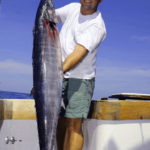
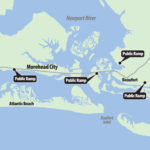
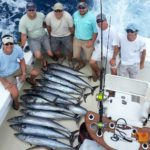
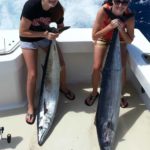
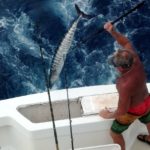



Be the first to comment